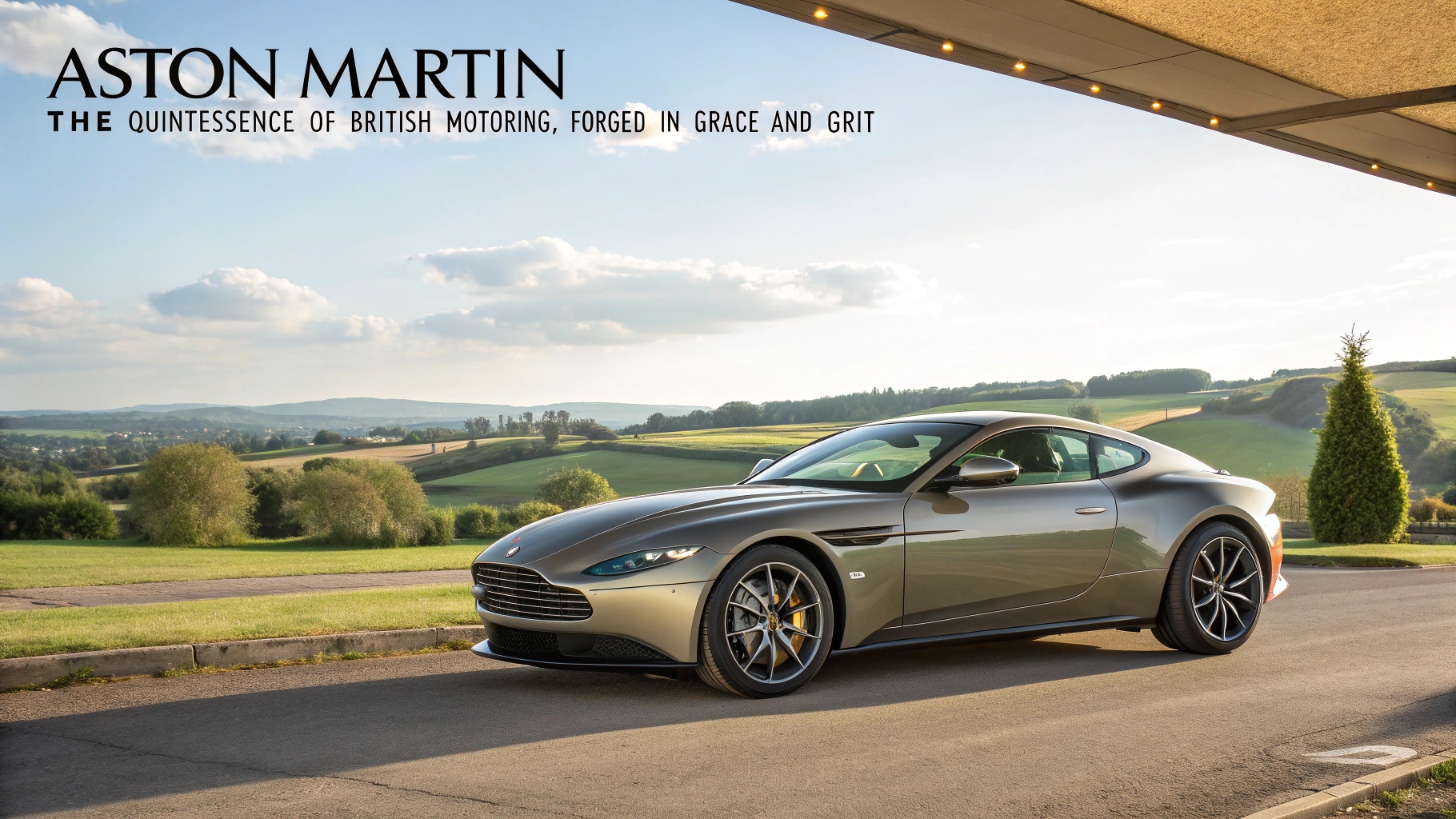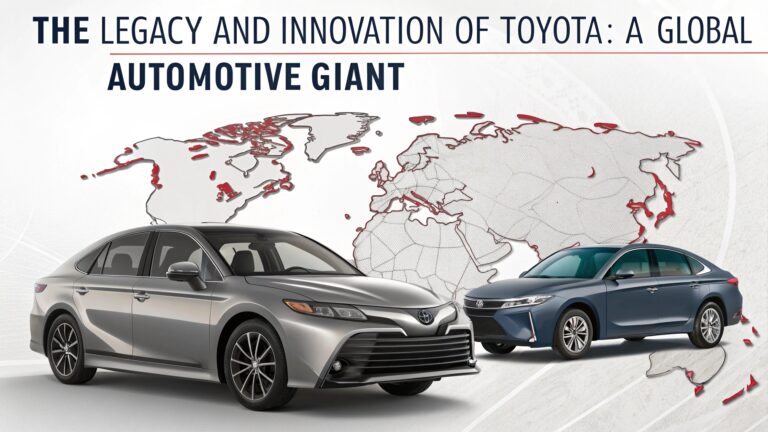Aston Martin: The Quintessence of British Motoring, Forged in Grace and Grit
The name itself is a incantation, a whispered promise of unrivalled elegance fused with latent, thunderous power. To speak of Aston Martin is to speak of an automotive ideal, a century-long pursuit of perfection that has created not merely cars, but rolling sculptures with a predatory heart. It is a marque that has become synonymous with a very specific breed of luxury—not ostentatious or vulgar, but understated, confident, and profoundly capable. The story of Aston Martin is a tapestry woven with threads of triumph and near-collapse, of cinematic fame and racing glory, all culminating in the creation of some of the most desirable machines ever to grace the world’s roads. This is the enduring legacy of a company that has consistently defined what it means to drive, and be driven by, a true GT car. The very identity of Aston Martin is built upon a foundation of balancing art and engineering, creating a symphony of design and performance that resonates on a deeply emotional level.
The Post-War Foundation: From DB to Silver Screen Immortality
While the company’s origins date back to 1913, it was in the post-war era that the modern legend of Aston Martin was truly forged. Under the ownership of industrialist David Brown, whose initials would become the most famous in its history, the company found its defining voice. The DB2, DB MkIII, and finally the DB4 and DB5 established a design language that remains instantly recognisable today: the iconic grille, the muscular yet graceful haunches, the long bonnet and short rear deck—a profile that screams performance and pedigree. It was the DB5, however, that catapulted Aston Martin from the realm of automotive enthusiasts into global superstardom. Its association with Ian Fleming’s fictional spy, James Bond, in 1964’s Goldfinger, was a moment of marketing and cultural alchemy that has never been surpassed. The car became a character in its own right, equipped with fictional gadgets that captured the world’s imagination and cemented the DB5 as the most famous car in history. This partnership did more than just sell cars; it defined the brand’s image as one of sophistication, danger, and impeccable taste—an association that continues to pay dividends nearly six decades later. This era solidified the core principles for every Aston Martin that would follow: breathtaking beauty, a hand-crafted interior, and a sonorous, high-performance engine.
The Rollercoaster Years: A Test of Resilience
The path of Aston Martin has never been smooth asphalt; it has been a treacherous and winding road marked by financial chasms. The latter half of the 20th century was a constant battle for survival. The company passed through a bewildering number of owners, each attempting to capture the magic of the David Brown era while navigating the harsh economic realities of building low-volume, hand-built cars. Periods of innovation, like the stunning William Towns-designed Lagonda saloon, were interspersed with periods of stagnation and uncertainty. Yet, through it all, the cars never lost their essential character. The V8 Vantage of the late 1970s, dubbed “Britain’s first supercar” for its ferocious performance, proved the company still had teeth. The Virage of the early 90s and the subsequent DB7—designed by Ian Callum and a huge commercial success—kept the flame alive. This resilience is a key part of the brand’s mystique. It is a company that has been repeatedly counted out, only to roar back to life, much like the fictional secret agent it is so associated with. This history of overcoming adversity makes ownership feel like being part of an exclusive and passionate club, a custodian of a precious legacy. The very survival of Aston Martin is a testament to the powerful allure of its brand and the unwavering dedication of its engineers, designers, and patrons.
The Modern Era: The DB9 and a New Chapter
The dawn of the 21st century marked a renaissance, heralded by the arrival of the DB9 in 2004. This was more than a new model; it was a complete rebirth. Built on an innovative bonded aluminium structure, the DB9 was lighter, stiffer, and more advanced than any of its predecessors. Its design, under the guidance of Henrik Fisker, was a masterclass in evolution, honouring the timeless lines of the DB lineage while feeling utterly contemporary. The DB9, and its more aggressive sibling the DBS, reestablished Aston Martin at the very pinnacle of the grand touring world. This era also saw the birth of the ultimate expression of the brand’s engineering ambition: the One-77. With a naturally aspirated 7.3-litre V12, a carbon fibre chassis, and a price tag deep into seven figures, this hypercar-limited to just 77 units-was a statement of intent, proving that Aston Martin could compete with anyone in terms of exclusivity, performance, and technological artistry. It was a halo car that bathed the entire model range in its glorious light. This period solidified the modern product strategy, building upon the DB core with extensions like the Vantage (the accessible sports car) and the Rapide (the four-door, practical expression of the GT ethos), creating a family of vehicles that shared a common language but spoke to different desires.
Racing and Performance: The Heart of the Beast
To view Aston Martin solely as a creator of elegant grand tourers is to miss half of its soul. Since its earliest days, the company has been forged on the racetrack. Its iconic 1959 victory at the 24 Hours of Le Mans with the DBR1, driven by Carroll Shelby and Roy Salvadori, is the stuff of motorsport legend. This competitive spirit has never truly faded. In the modern era, this passion has been channelled through projects like the GT3 and GTE racing versions of the Vantage, which have claimed countless victories in prestigious events around the globe, including class wins at Le Mans. The creation of the Valkyrie hypercar, a technical partnership with Red Bull Advanced Technologies, represents the absolute zenith of this racing DNA. A road-legal car conceived with Formula One philosophy, with insane levels of downforce and a Cosworth-developed naturally aspirated V12 engine screaming to over 11,000 rpm, the Valkyrie is a declaration that Aston Martin’s ambitions know no bounds. It is a project that is as much about pushing the boundaries of physics as it is about building a brand image, proving that the heart of this beloved manufacturer still beats with a fierce, unrelenting need for speed. This dedication to motorsport is not just for show; it feeds back directly into the road cars, honing their dynamics, reliability, and performance edge.
The Future: Electrification and a Bold New Horizon
Today, Aston Martin stands on the precipice of its most transformative era yet. Under new leadership and with a refreshed strategy, the company is navigating the industry’s seismic shift towards electrification while staying true to its core values. The challenge is immense: how does a brand so deeply connected to the soul-stirring sound and visceral response of a high-performance internal combustion engine transition to an electric future? The answer lies in its unwavering commitment to emotion. The future electric Aston Martin will not be sterile appliances; they will be machines designed to deliver a new kind of sensory experience, with breathtaking performance, unparalleled luxury, and, crucially, that unmistakable Aston Martin design drama. With the promise of a fully electric fleet by 2030, the company is investing in a new generation of vehicles that will carry the torch forward. The recent launches, like the critically acclaimed DB12 and the new Vantage, represent the final and most highly evolved form of the internal combustion Aston Martin, packing more power, technology, and dynamism than ever before. They are a powerful reminder of where the brand came from, even as it boldly accelerates into its next chapter, ensuring that the legacy of this most revered British icon is not just preserved, but passionately evolved for a new generation of admirers and drivers.


